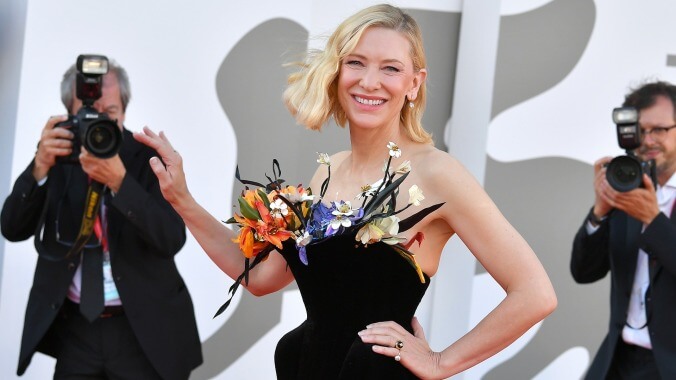It’s no secret that good onscreen lesbian representation can be hard to come by. Too often you’re stuck between the invasive gaudiness of Blue Is The Warmest Color or a period piece about two white women where one dies at the end. But when it comes to the highlights, the 2015 romantic drama Carol simmers at a perfect temperature, thanks in large part to Cate Blanchett’s performance as an older woman who, in the midst of a divorce, pursues an affair with a young shopkeeper (Rooney Mara.) Nearing a decade later, Blanchett tells The Daily Beast she’s proud of the impact Carol had, although finding a notch in queer history was never the ultimate goal.
“Carol, when we made it, now I look back on it—no other films like that were being made, and Patricia Highsmith’s story was the first story where a woman who loved other women wasn’t redeemed by the love of a man or killed herself, so it’s a seminal piece of work in that and many other respects,” Blanchett shares. “But at the time Carol was made, I subsequently realized just how important it became to people. And at the time of making it, it was just something that we had to make, and so I’m not interested in agitprop.”
Now, Blanchett is gearing up for another potentially seminal role in Todd Fields’ highly-anticipated Tár. In the film, Blanchett stars as Lydia Tár, the first-ever female composer and conductor of an esteemed German orchestra and an openly-identifying lesbian. According to Field, the role “wasn’t written with Cate Blanchett in mind—it was written for Cate Blanchett,” which begs the question: how has a straight woman grown so in-demand as a vessel for complex, queer characters? And how does Blanchett view the sapphic corners of her filmography?
Blanchett dove into her mindset after The Daily Beast asked her why it’s important to give vibrant queer stories life onscreen. “I’m very wary of butting up the word ‘importance’ with the word ‘art,’ because I don’t see that artistic practice is an educational tool,” she explains. “I think what people do with it after the fact the thing—after ‘the thing,’ as Todd [Fields] likes to call it—is made can be politicized, or disseminated, or discussed, or people can be disgusted with it, or offended by it, or inspired by it. But that is outside of our control.”
Blanchett has a point when it comes to infusing cinema with partisanship or force-fed morality, but her take also feels slightly reductive. Part of the reason Blanchett can take such pride in movies like Carol or Tár is that they explore new horizons for how sexuality gets portrayed onscreen—and teach viewers those horizons are possible. Blanchett is right that both films don’t solely ride on their lesbian protagonists, but that fact is a lesson in and of itself: there’s a lot more to the average gay person than, well, being gay. Putting queer characters onscreen that are as nuanced and varied as the real-life queer community demands the recognition of its existence. Art may not necessitate learning, but it can be a gift when it does.


 Keep scrolling for more great stories from A.V. Club.
Keep scrolling for more great stories from A.V. Club.